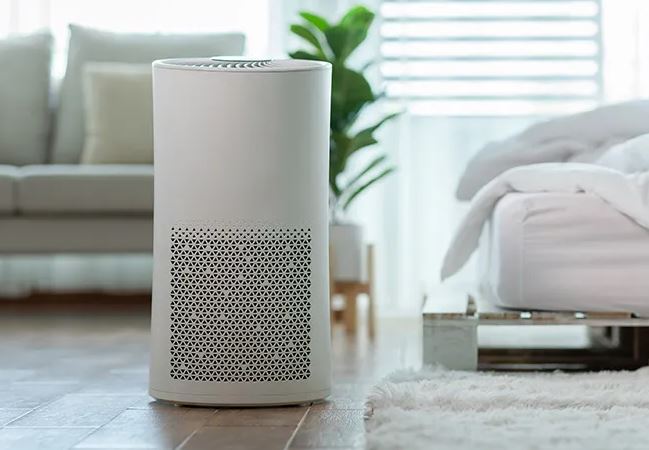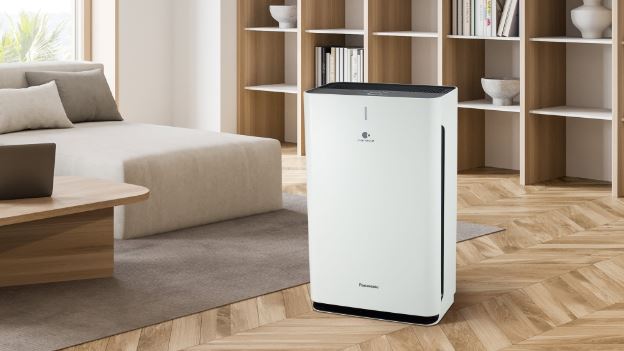Best Air Purifiers for Travel: Compact and Portable Solutions
Best Air Purifiers for Travel: Compact and Portable Solutions
Blog Article
In today's health-focused society, the quality of the air we breathe has become an increasingly important consideration for individuals across the globe. With growing concerns over air pollution and a better understanding of the effects of indoor pollutants on our health, it's no surprise that the air purifier industry is experiencing tremendous growth.
Air purifiers are machines that remove contaminants from the air in a room, improving indoor air quality. They are particularly beneficial for individuals suffering from allergies, asthma, and respiratory conditions as they can drastically decrease the amount of allergens, pollutants, and irritants in the air. For those without respiratory concerns can take advantage of air purifiers, as they give added assurance and protect against airborne pathogens.
This comprehensive overview will explore in detail the intriguing world of air purification, exploring their benefits, the different types available, crucial aspects to think about when making a purchasing decision, and optimizing your purifier's performance. By the end, you should have a thorough grasp of air purifiers and be able to make an informed decision about whether investing in one is the smart move for your household.

Decoding Air Pollutants and Their Influence on Health
To appreciate the value of air purifiers, it's essential to grasp the types of pollutants they target and the possible effects of prolonged exposure.
Indoor air pollutants can be generally classified into the following three categories:
- Particulate Contaminants: This includes tiny solid and liquid particles suspended in the air. Examples include smoke, dust, pollen, pet dander, and mold spores. Particulate matter can cause respiratory issues and trigger allergic reactions.
- Volatile Organic Compounds (VOCs): VOCs are gases emitted from various solids or liquids. Sources of VOCs include paints, cleaning products, aerosol sprays, and pesticides. Exposure to VOCs can lead to eye, nose, and throat irritation, headaches, and nausea.
- Understanding Biological Contaminants: These include microbes such as bacteria, viruses, mold spores, and mildew. They can cause a variety of health problems, from minor allergies to serious infections.
The effects of these pollutants on human health can differ considerably. For those suffering from respiratory ailments or weakened immune systems, exposure to indoor air pollutants can lead to severe complications. Even those in good health, long-term exposure to certain pollutants can impact respiratory health and overall well-being over time.

The Science Behind Air Purifiers
Air purifiers use a variety of physical and chemical processes to trap and eliminate airborne pollutants. Understanding the fundamental processes employed by purifiers will help you understand their efficiency and the different types available on the market.
Here are the key processes and technologies used in air purifiers:
- Mechanical Filtration: This is the most widely used approach used in air purifiers. It involves using specialized filters to capture particles as air is drawn into the purifier. The filters can be made from various materials, each designed to target specific particle sizes and types. For example:
- Pre-filters: The First Line of Defense: These are usually the initial barrier, capturing larger particles like dust, hair, and similar larger particles.
- HEPA Filtration: Unparalleled Performance: HEPA filters are highly effective at trapping ultrafine particles, including dust mites, pollen, bacteria, and viruses. To be labeled a true HEPA filter, it must effectively capture particles as small as 0.3 microns, with a minimum efficiency of 99.97%.
- carbon filtration: These filters are designed to adsorb odors, VOCs, and gaseous pollutants.
- The Power of Ionization: Ionizers use electrical charges to create ions with a negative charge, which attach themselves to particles in the air. The particles become charged, causing them to stick to surfaces or the purifier.
- Ozone Generators: Some air purifiers use ozone as a powerful cleaning agent. While effective, ozone can also be harmful to human health so these types of purifiers should be used with care and only when no one is present.
- UV Light: Shining a Light on Purification: UV light can be used to destroy biological contaminants like bacteria, viruses, and mold spores. UV light is commonly paired with filtration to capture particles first, followed by UV light to neutralize any remaining biological threats.
Selecting the Perfect Purifier
With a wide array of options available, selecting the ideal air purification system can be a daunting task. It's important to consider several factors to ensure you make the best decision for your unique requirements and space.
Here are some essential factors to weigh:
- Sizing Up the Room: Air purifiers are typically rated according to room size, so it's important to choose a model that can efficiently purify the air in the designated space. Most purifiers will list a maximum room size or a Clean Air Delivery Rate (CADR), which indicates the volume of filtered air delivered per minute.
- Type of Contaminants: Identify the specific pollutants you want to target. If you suffer from allergies, look for a purifier with a HEPA filter. For odor removal, consider a model with a carbon filter. If you're concerned about pathogenic microorganisms, a purifier with UV light disinfection might be best.
- Whisper-quiet Performance: Air purifiers can produce a range of noise outputs, so if you plan to use it in a quiet bedroom or tranquil space, look for models with a sleep mode or quiet setting.
- Maintaining Performance: Consider the regular maintenance and associated costs of the purifier. HEPA filtration systems may need periodic replacement, depending on use and environmental factors. Include filter replacement costs in your calculations when making your choice.
- Smart Innovations: Many purifiers offer smart features like air quality sensors, automatic modes, and Wi-Fi connectivity, allowing wireless control and real-time data. These features can make your purifier more user-friendly and efficient.
Optimizing Performance of Your Air Purifier
Once you've chosen and set up your air purifier, there are several things you can do to ensure it operates at maximum efficiency and delivers the maximum benefits:
- Strategic Positioning: Position your purifier in an unobstructed area, avoiding walls and furniture, to ensure optimal airflow. Avoid placing it near open windows or doorways as drafts can disrupt the purifier's effectiveness.
- Consistent Use: For the best results, it's recommended to run your purifier continuously. Many models have energy-saving features or smart modes that adjust the fan speed based on air quality, so you can maintain healthy air quality while conserving energy.
- Maintain the Filters: Regularly adhere to the recommended filter replacement schedule. Over time, filters become clogged with particles, reducing the purifier's efficiency. Schedule filter replacements so you don't forget.
- Minimize Indoor Pollutants: Alongside using an air purifier, take steps to limit indoor contaminants. This could include regularly vacuuming and dusting, using natural cleaning products, and minimizing the use of strong chemicals or aerosols. Report this page